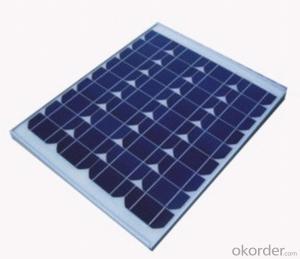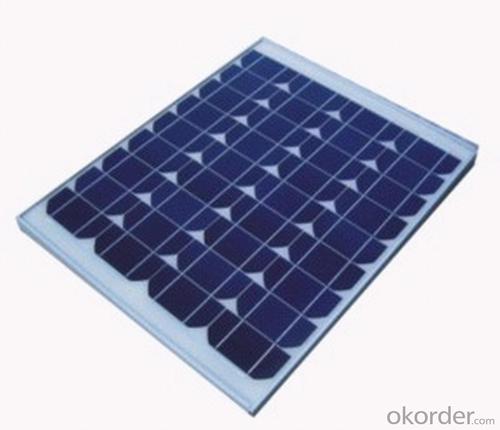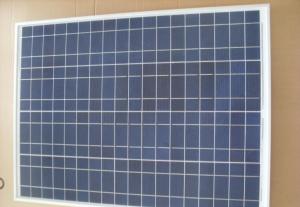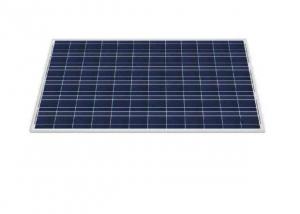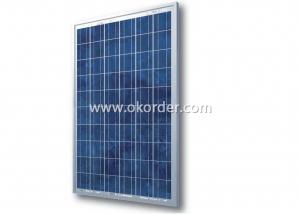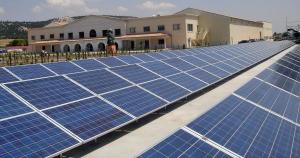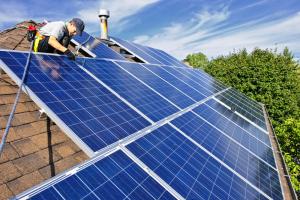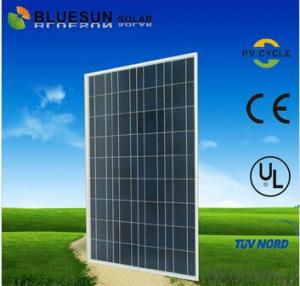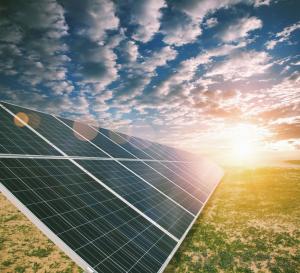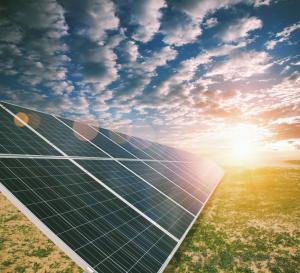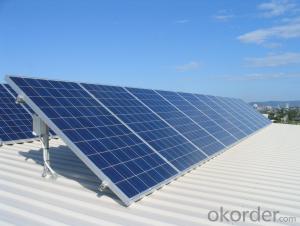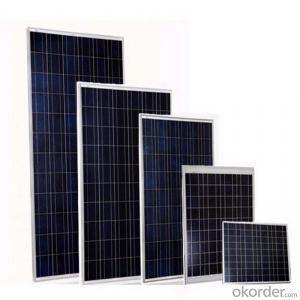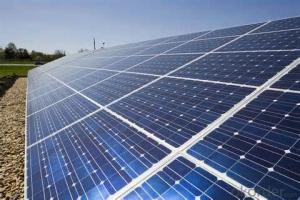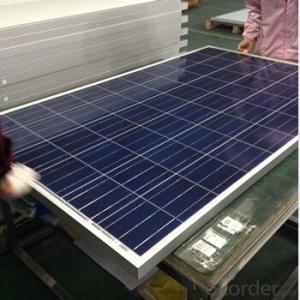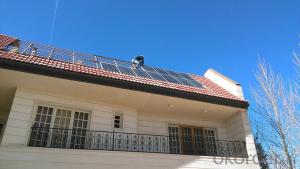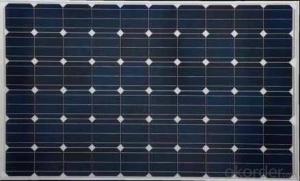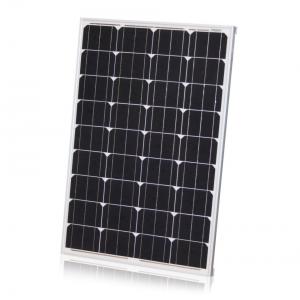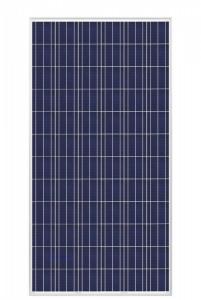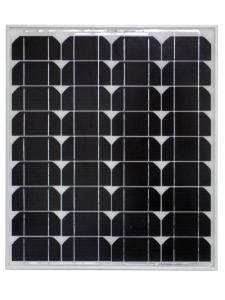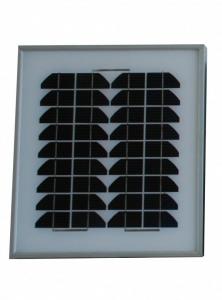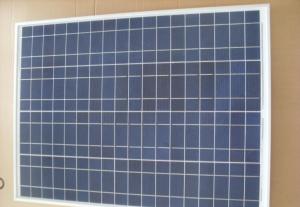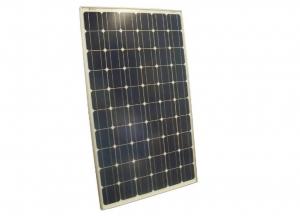High Efficiency Polycrystalline Solar Panels 240W in Louisiana
- Loading Port:
- China main port
- Payment Terms:
- TT OR LC
- Min Order Qty:
- 1000 watt
- Supply Capability:
- 1000000 watt/month
OKorder Service Pledge
OKorder Financial Service
You Might Also Like
Specification
Introduction of Poly solar panels CNBM
Polycrystalline Solar Panels 240W With High Efficiency
CNBM Solar photovoltaic (PV) Panel is designed for large electrical power requirements. It is the optimal choice for both on-grid and off-grid power systems. CNBM Solar panel offers high performance of power per square foot of solar array. Monocrystalline silicon(c-Si): often made using the Czochralski process. Single-crystal wafer cells tend to be expensive, and because they are cut from cylindrical ingots, do not completely cover a square solar cell module without a substantial waste of refined silicon. Hence most c-Si panels have uncovered gaps at the four corners of the cells.
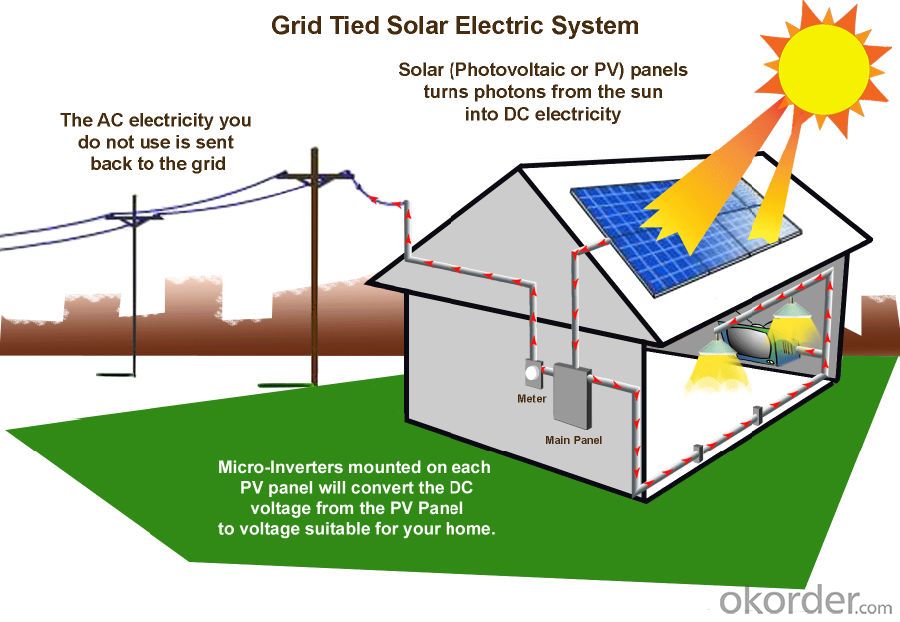
Feature
1.Solar Cell : High efficiency crystalline solar cell. Even if under the weak light, the solar module can produce maximum power output.
2.Tempered glass (toughened glass): Anti-reflecting coating and high transmission rate glass increase the power output and mechanical strength of solar module.
3.EVA and TPT: Using high quality EVA and TPT to prevent destroying and water.
4.Long lifetime: ≥25 years; Less power decrease.
5.Resisting moisture and etching effectively, not effected by geology.
6.The certificate issued by international authority: UL, TUV, IEC, VDE, CE.
Specification
Characteristics of Poly solar panels CNBM | |||||
Max Power Voltage Vmp(V) | 30.3 | 30.8 | 31.1 | 31.4 | 31.85 |
Max Power Current Imp(A) | 7.60 | 7.64 | 7.73 | 7.81 | 7.85 |
Open Circuit Voltage Voc(V) | 36.1 | 36.6 | 37 | 37.3 | 37.68 |
Short Circuit Current Isc(A) | 8.50 | 8.55 | 8.65 | 8.75 | 8.85 |
Max Power Pm(W) | 230W | 235W | 240W | 245W | 250W |
Temperature Coefficient of Cells Poly solar panels CNBM | |
NOCT | 45℃ ± 2℃ |
Temperature Coeffucients of Isc (%/℃) | 0.0492 |
Temperature Coeffucients of Voc (%/℃) | -0.3374 |
Temperature Coeffucients of Voc (%/℃) | -0.4677 |
Mechanical Data of Poly solar panels CNBM | |
Dimension | 1638 × 982 × 40 mm |
Weight | 19.5 kg |
No. of Cells and Connections | 60 (6 ×10) |
Tolerance | 0 ~ + 5 W |
Cell | Monocrystalline Cell 156 × 156 mm |
Packing | 624 Pcs/40ft(H) Container |
Limits of Poly solar panels CNBM | |
Operating Temperature | -40℃ to +85℃ |
Storage Temperature | -40℃ to +85℃ |
Max System Voltage | 1000VDC(IEC) / 600VDC(UL) |
Guarantees of Poly solar panels CNBM | |
Products Guarantee | 12 yrs free from defects in materials and workmanship |
Performance Guarantee | No less than 90% within 10yrs and no less than 80% within 25yrs |
Certificates | TUV(IEC61215&IEC61730),VDE(IEC61215&IEC61730),UL,CE |
Packaging Information
Package:26pcs/box
Quantity:1 box/pallent
Loading Capacity:952pcs/40ft
- Q: Can I make a solar panel at home?How to make it?
- The first link is a video on how to make solar cells from powdered donuts and tea. But you probably want to make solar panels from scrap solar cells. The second video is on how to make solar panels from scrap solar cells. You used to be able to get damaged cells for free but so many people have been piecing them together that they sell them now. You've kinda missed the boat on solar panels for work alone.
- Q: I've been reading up on Solar panels because I think in the long run this would be beneficial in the long run. My Dad had looked into it before passing and had said it was too expensive. How much does it range for getting them placed on the roof and how exactly does that work? I think I remember being told that PGE has incentives and could possibly even end up paying you for having it? What does having panels cover? I know electricity but does it also heat things up? Sorry I'm kinda dee dee dee on this lol. Any and all information would be greatly appreciated. If anyone has solar panels can I get your experiences with them? Thanks!!
- By producing even a small portion of your home's electricity through the use of solar panels, you will eventually experience some financial savings. This may take five years or so, but good solar panels often have a 20-year lifespan. State and federal tax credits may help offset their initial expense. The best thing about solar panel installation is that the energy it produces is clean, meaning that there aren't any bad or harmful by-products produced during the process of electricity generation. So all in all, it seems that solar energy is clean, green energy.
- Q: Can solar panels be used to power a film set?
- Yes, solar panels can be used to power a film set. By harnessing the sun's energy and converting it into electricity, solar panels can provide a sustainable and renewable source of power for various film production needs, such as lighting, cameras, and equipment. This not only reduces the carbon footprint of the film production but also saves costs on traditional energy sources.
- Q: Solar panels are expensive,can I make my own solar panel?
- I don't think it would be very easy to do with household stuff, or even with anything you can find in stores. All I can tell you is that typical electronics LED lights tend to create current when they have light shining on them, but you would need millions for them to be any use.
- Q: Can solar panels be used in areas with high levels of vandalism?
- Yes, solar panels can be used in areas with high levels of vandalism. However, it is important to implement additional security measures, such as installing anti-vandalism devices, using tamper-proof mounting systems, and employing surveillance systems to deter potential vandals. Regular maintenance and quick repairs are also crucial to ensure the optimal functioning of solar panels in such areas.
- Q: first of all, to be honest i have totally no idea on how a solar panel works.my task is to design something like a solar powered street lamp which store sun energy during day time and convert it into electrical energy then light energy so that the lamp can work during night time.any ideas on how to design the solar panel? which can store enough or more enegry in case there is no sunlight another day. and low cost as well :D
- image voltaic panels do no longer shop capability, they basically generate it. in case you opt to shop capability you like a battery economic enterprise of a few sort to get you for the time of the night and each time the sunlight isn't shining. in case you have somewhat extra in the fee selection you would be able to desire to look at a geothermal equipment to your place's heating and cooling needs. they are distinctly useful structures and you'd be able to supplement notwithstanding you like. notwithstanding you do, in spite of the indisputable fact that i'm hoping you have a sturdy construction envelope in place already. image voltaic panels are cool, yet once you have a leaky homestead, you're nevertheless no longer getting the final out of your panels. Do the extra mundane stuff first. Insulation, homestead windows, and climate-tight doorways.
- Q: Solar panel for battary charging
- What you are stating is that the battery you have will operate the UPS for about 2 hours before it is drained past the point of no return (technically 2.82 hours, but that would be a dead battery - most well-designed UPS systems cut off when the battery gets below about a 30% charge so that battery is not damaged. Lead-Acid batteries have about a 0%/month self-discharge rate if there is no load connected. The very best systems are as low as 3%, the worst are over 20% - and all at a 'normal' temperature. So, you will need a maintenance charger of about ten (0) watts or so - amp will be more than enough. And about any solar panel will handle that much with the proper charging connection.
- Q: Looking to install solar panels in my house.
- Wholesale prices for BP solar panels range between $335 for the 40 watts panel to $835 for the 70 watts panel. Here's a brief listing of wholesale prices for BP solar models: - BP340J solar panel (40 watts) @ $335 - BP350J solar panel (50 watts) @ $37 - BP375J solar panel (80 watts) @ $504 Right now I'm getting a series of 50 watt (7.5 volts) panels installed in my house. It's a start to reduce dependence on electricity bills and try get some tax rebates as well.
- Q: Are there any government incentives for installing solar panels?
- Yes, there are various government incentives available for installing solar panels. These incentives can include tax credits, grants, and rebates. They aim to promote the use of renewable energy sources and reduce reliance on traditional fossil fuels.
- Q: How much would it cost to make an average size house be able to depend on solar panels for all of its power?How many solar panels would you need and wear would you put them? Would the roof be large enough to support the panels needed?Do solar panels work well in higher latitudes like northern USA or southern Canada? Can you power your house for the whole year if you live in these environments? What kind of maintenance do solar panels require?
- there are maximum of variables that would make your equipment greater or much less of a good investment. I even have had a equipment for a pair years and that i'm very happy with them. I distinctly propose you get a no legal duty quote, any respected photograph voltaic installation business enterprise would be prepared to try this. I actually have a 2 tale homestead with a pool (pump is one in all my great potential purchasers) in sunny CA and characteristic great orientation, and no coloration on the section. I have been given a three.seventy 4 kw equipment (20 panels i think of) that fee $26K, I gained a $0K rebate from my application and a $2K fed tax credit (at the instant the tax credit on the comparable equipment is $7800) i became into projected to break inspite of my utilization in 7.2 years, it would desire to be faster in view that my city has raised expenses via 20% interior the previous 2 years. The equipment produces approximately ninety% of my summer season utilization and approximately 50% of my wintry climate utilization.
Send your message to us
High Efficiency Polycrystalline Solar Panels 240W in Louisiana
- Loading Port:
- China main port
- Payment Terms:
- TT OR LC
- Min Order Qty:
- 1000 watt
- Supply Capability:
- 1000000 watt/month
OKorder Service Pledge
OKorder Financial Service
Similar products
Hot products
Hot Searches
Related keywords
